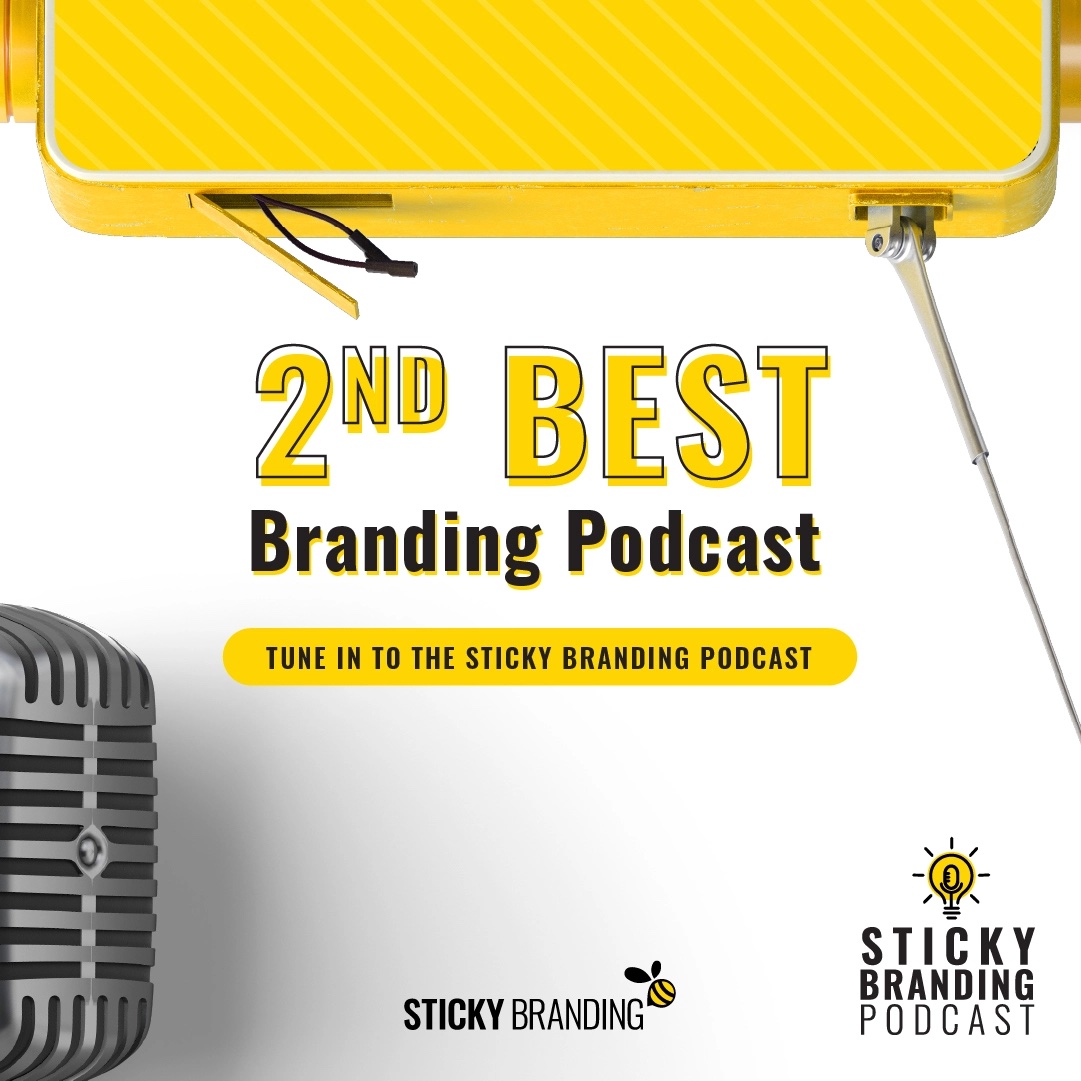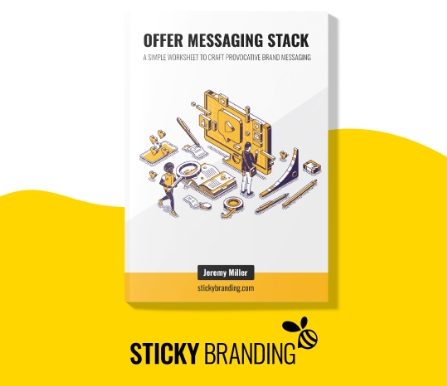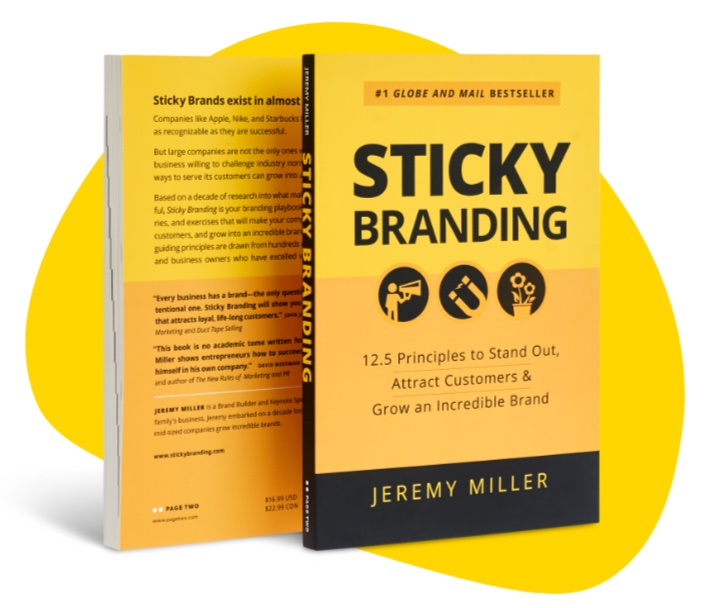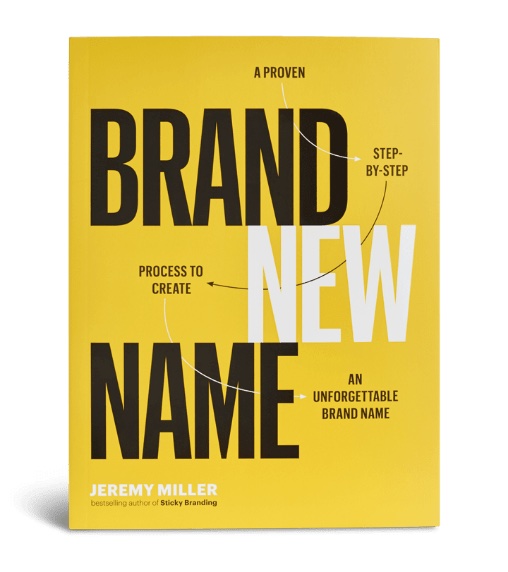Every great brand has a discernible tone. It’s a theme that’s linked to the brand through the decades. No matter how the brand evolves or changes the tone doesn’t change.
This tone is a brand metaphor. We usually think of metaphors as explanations or comparisons. For example, “our office is a zoo” or “time is money.” These are surface metaphors. They are broadly used in everyday language, and an integral part of how we communicate.
Brand metaphors operate at a much deeper and less obvious level than surface metaphors. You may not be consciously aware of them, but as soon as they’re pointed out they become obvious.
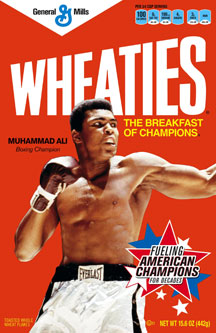
Its packaging features world class athletes. Over the years the cereal boxes have featured Muhammad Ali, Michael Jordan, Bruce Jenner, Tiger Woods, and Michael Phelps. Wheaties’ brand metaphor is winning, especially in the field of athletics.
Chevy trucks are “like a rock.” Gerald Zaltman, author of How Customers Think, explains, “When consumers make a connection between the idea of a Chevy truck and the idea of a rock, they attribute certain rocklike qualities, such as the ability to take abuse, to Chevy trucks and translate them into notions of reliability and ruggedness.”
“The breakfast of champions” and “like a rock” are more than creative advertising campaigns and taglines. They are ideas based on brand metaphors. We connect with these brands at a deeper more visceral level because they go beyond marketing platitudes.
“Like A Rock” Articulates What Consumers Believe
“Metaphors do not exist as words in memory, but as networks of abstract understanding that constitute part of our mental imagery,” writes Zaltman.
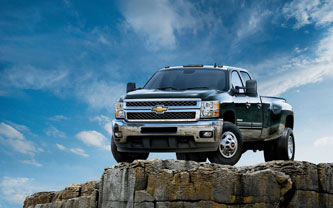
Chevy asked a group of consumers to bring in pictures to describe their vehicles. The consumers were asked to find pictures that depicted their thoughts and feelings about their trucks without showing them. They could use whatever picture they wanted as long as there were no other trucks, cars, or motorized vehicles in them.
As consumers brought forward their pictures and stories a set of themes emerged: reliable, takes abuse, rugged, tough, and dependable. Consumers weren’t sharing stories about the leather interior or the truck’s horsepower and torque. They were talking about the physicality of the truck.
The phrase “like a rock” came from Bob Seger’s iconic song. Julie Halpert explains, “Don Gould, Campbell-Ewald’s truck creative director [working on the Chevy account], was listening to a Bob Seger album and heard the song ‘Like a Rock.’ He thought it was a perfect way to embody the truck’s toughness, and also suggested the owners were strong and self-reliant.”
The song embodied consumer sentiment down to a T. The lyrics described the pictures consumers brought forward in the metaphor-elicitation research:
Like a rock, I was strong as I could be
Like a rock, nothin’ ever got to me
Like a rock, I was something to see
Like a rock
Like a rock. standin’ arrow straight
Like a rock, chargin’ from the gate
Like a rock, carryin’ the weight
Like a rock
Like a rock, the sun upon my skin
Like a rock, hard against the wind
Like a rock, I see myself again
Like a rock
The campaign was an immediate hit. Jeff Hubert, Chevy’s marketing director, remarked, “The people reacted so positively to it that we knew we had a home run.”
Brand Metaphors Breakaway From Shallow Marketing
Brand metaphors break away from the traditional approach of marketing features and benefits.
Marketers often focus in on the nuances of what makes their products and services different from the competition. These differences could be a new feature, a branded service offering, or their location.
These may seem like big differences from the marketer’s point of view, but from the customer’s perspective these differences are rather inconsequential. Zaltman calls this the “seduction of differences.” It’s easier to explain how you’re different than to demonstrate you are different.
Brand metaphors require deeper thinking:
- What do your products and services represent for your customers?
- How do you deliver value?
- What place does your brand fit in your customers lives or businesses?
- How does your company behave differently from your competitors?
- What’s it like to work with your company?
The tone of your business is more important to market than the features and benefits because it’s a constant. But this can be a tough sell internally.
Your team has invested in creating products and services that are different. You’ve built capabilities that no one else has. But brand building is more opaque than we’d logically like to accept.
Ninety-five percent of all cognition occurs below your awareness. This is known as the 95-5 split. You’re only aware of five percent of your thinking, and this is where the features and benefits arguments reside.
Ninety-five percent of your decision making is happening below the surface. It’s “how you feel” about a product or company. It’s “what you believe” it will do for you. This is the area of the brain marketers have to engage, but it’s hard to develop campaigns and programs that are designed to engage the subconscious.
Management teams often reject “airy fairy” campaigns, because they can’t quantify what they will do or what they are selling. Brand metaphors are your tool to create marketing that sells while engaging customers at a more base level. Brand metaphors break through the conscious and engage the subconscious.
Chevy truck owners resonate with “like a rock,” because it consciously conveys what their subconscious is feeling. It also pleases the leadership team, because it articulates the positioning and core features of the products.
Seven Deep Metaphors
There are universal metaphors that span countries, cultures, languages, and dialects. Gerald Zaltman calls them the seven giants:
- Balance: The idea of keeping things “as they should be.” People talk about balance in many ways. Your diet can be “out of balance.” You may be striving for “work-life balance.” Balance includes physical, mental, social, psychological, or even aesthetically.
- Transformation: Transformation involves changing states or status. It’s the caterpillar transforming into a butterfly. Transformation is about change, and we might consciously seek it or avoid it.
- Journey: Journey is a core idea and can be physical, social, or psychological. Your career is a journey, and you could be “stuck,” “leapfrogging positions,” or working “towards retirement.” Robert Frost said, “Two roads diverged in the wood, and I took the one less traveled.”
- Container: Containers keep things in like Tupperware, or they keep things out like a moat around a castle. The privacy debate around social media and the Internet is an example of a container metaphor. We prize our privacy, and we’re concerned who has access to it.
- Connection: Connections are personal. We express ownership of our things. For example, “I love my car.” We also express disconnection or loss when someone close to us passes away. Connection brings up ideas of marriage, children, kids going off to college, and giving and receiving gifts.
- Resource: We need resources to survive: food, water, air, even a mother’s love. Your smartphone is a resource. People often describe themselves as “feeling naked without it.” We have mentors that are a “fountain of knowledge.” Resources are the things we need.
- Control: Control may be the most visceral of the deep metaphors. As humans we crave control, and we feel very uncomfortable when we lose control. People may feel “powerless” when confronting a bad boss. We have laws and morals to help us establish control. When things are going well you might say you’re on “autopilot.”

The seven deep metaphors are the building blocks of brand metaphors. Coca-Cola’s brand is anchored on the deep metaphor of transformation. Coke transforms you. It gives you energy and it refreshes you. Coca-Cola brings its brand metaphor to life with campaigns like “Open Happiness” and “Twist the Cap to Refreshment.”
Coke is signalling to consumers that its brand delivers energy and vitality, which will transform your life for the better.
Discover Your Brand Metaphor
Finding your brand metaphor is a fun process. It’s an exercise I run frequently with clients, because it leads to deeper insights and creativity into what their brand represents.
Getting Started: To discover your brand’s metaphor recruit five to twenty five customers to participate in the project.
This is often the most challenging step, because you may perceive that your customers are too busy to participate. Ask anyways. It’s always surprising and encouraging to see how many of your customers will be glad to help out.
The Task: Ask each of the participants to tell a short story of your company, product, or service. Their story could be about how they first found your company, and how they felt about the experience. It could be a story about how they use your products and services, and the impact they’ve had on their day-to-day lives.
Let them pick. Ask them to tell a meaningful story about their experience working with your company, product, or service.
The Catch: This project has a small catch. Instead of having the participants tell you a story, have them tell it with pictures. Ask each participant to find a series of pictures to visualize their story without using any pictures of the product or service.
Have them think of this as a slideshow. Ask them to find five to twenty images to tell their story. They can print the photos, or they can arrange them in PowerPoint (or another presentation tool).
The pictures are the key to this exercise, because it helps the participants to be more descriptive with their experiences. They will use more colorful language and make it easier for you to hear their metaphors.
Interview the Participants: The next step is to interview each of the participants and have them deliver to you their story. Give them at least fifteen minutes, and ask them to be as thorough as possible.
Have fun with the process. Let them share an epic tale. Probe them to go deeper. Ask them why they chose each image. Get them to dive as deeply as possible into the story.
Shut Up and Listen: Interviewing is a skill. Go into the process with a commitment not to talk. Don’t interject with your opinions. Don’t challenge the participant. Don’t add your two cents.
Listen. Observe. Ask questions.
As the participants are sharing their stories listen for details and take notes. Write down the words or phrases they use. Document their story as it unfolds. Try not to judge or fill in any other details. Just listen, observe, and be present.
Find Common Phrases: Review your notes after each participant has completed their story. Look for common phrases, metaphors, or descriptions. Circle all of them.
Then roll-up your findings and see what trends emerge from the group. What did the participants’ stories have in common? What phrases were used frequently? How were the participants’ examples similar, and how did they differ?
Look for the nuances to get a deeper understanding of your brand.
Identify the Deep Metaphors: Once you have completed your analysis of the group try to link the phrases and stories to Gerald Zaltman’s seven deep metaphors: balance, transformation, journey, container, connection, resource, and control.
You may find several of the deep metaphors emerge. This is where you can start interpreting the results and deciding which metaphors are most relevant for your brand.
The objective is to reduce the descriptions and select a metaphor. If there are more than one that fits you can select a primary and a secondary deep metaphor, but no more than two. The most meaning is delivered when you are clear about which deep metaphor your brand is closely associated with.
Applying Brand Metaphors
In each of my businesses I have anchored the brand on a deep metaphor. LEAPJob’s deep metaphor was journey. Sticky Branding’s deep metaphor is transformation.
When we were going through the rebranding and naming process for LEAPJob we used the exercise above. Throughout the interviews participants described their career and job hunting like a journey. Some participants used phrases like “I’m stuck,” or “I’m not getting the promotion I expected.” Others talked about “changing directions” or going down “new paths” with a new job.
We move towards retirement, or pursue a promotion. Some steps on a career come quickly, and others stop us dead in our tracks. This is the language of a journey.
We built the brand metaphor right into the company’s name, LEAPJob. We developed the brand positioning, imagery, and customer experience on the metaphor of “leaping forward.”
Sticky Branding, on the other hand, has a very different objective. Branding can be a journey, but that’s not what we’re all about. We focus on the deep metaphor of transformation, because Sticky Brands evolve.
The “sticky” in our name isn’t about glue or being stuck, it’s about attraction. How do you make your business more appealing? How do you stand out like an orange tree in an evergreen forest? How do you become your customers’ first choice? These are the questions Sticky Branding solves, which are all grounded in the metaphor of transformation.
Understanding where the metaphor fits helps us define our services, the types of clients we help, how we deliver value, and how we tell our story.
The brand metaphor becomes the root of your brand. It centers your business and focuses your creativity. Instead of coming up with unique storylines for each new product feature or campaign, you can continue to build upon the root. You get to ask again and again, how do we articulate the brand metaphor so that it’s clear, obvious, and easy to understand?
Brand Metaphors Outlive the Strategy
Brands have a shelf life, but brand metaphors are static.
A brand’s positioning and value proposition typically has a shelf life of three to seven years, depending on the industry. Consumers brands shift far more rapidly than industrial brands, but regardless of the industry every company changes.
The beauty of brand metaphors is they don’t change. The way you express or articulate the brand metaphor may change, but their core meaning and presence is a constant.
Coca-Cola has owned transformation from the beginning, which makes sense considering the original formula included caffeine and cocaine. Coke was the original energy drink with an extra kick. In 1903 cocaine was removed from the Coca-Cola recipe, but the roots that Coke is refreshing and gives you energy has remained constant.
With the right brand metaphor you can deliver meaning and relevant customer experiences for generations to come. The brand metaphor outlives the strategy, and becomes the one constant of what your brand represents — no matter the timeframe.

